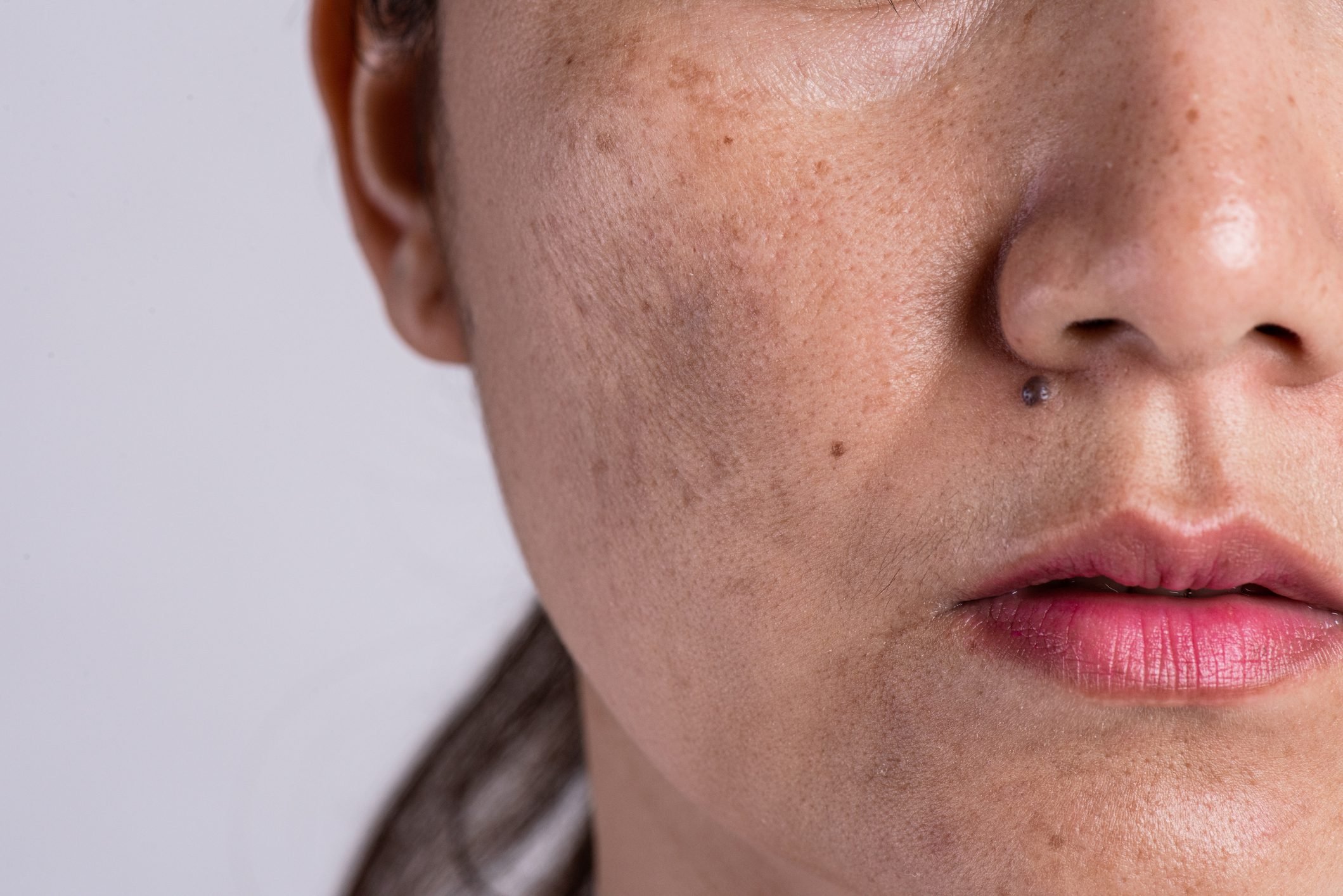Niacinamide and vitamin C are two potent antioxidant ingredients that provide complementary skincare benefits when applied topically. Used together in targeted serums, niacinamide and vitamin C work synergistically to brighten, even skin tone, boost collagen, defend against pollution damage, minimize spots and discoloration, reduce acne, smooth fine lines, and strengthen the moisture barrier for youthful, glowing skin.
This comprehensive guide will teach you everything you need to know about incorporating niacinamide serum and vitamin C serum for face into your routine. Learn about the science, key nutrients, proper use, ideal complementary ingredients, recipe formulas to make your own, and answers to common questions when using niacinamide serum and vitamin C serum for face. Get ready to unlock clear, radiant skin!
Chapter 1: The Science and Background Behind Niacinamide
Niacinamide is derived from niacin, also known as vitamin B3. It is a water-soluble precursor to the coenzymes NADH and NADPH, which are vital for numerous cellular metabolism and energy production reactions in the body.
Niacin was first isolated by biochemist Conrad Elvehjem in 1937, who discovered it as the nutrient pellagra-preventing factor. Niacin deficiency leads to the disease pellagra. When applied topically, niacin provides significant skin benefits.
Niacinamide stabilizes and increases ceramide levels in skin cells. Ceramides are natural lipids that constitute the skin’s protective moisture barrier. This helps reduce trans-epidermal water loss to lock in hydration and prevent dryness.
Niacinamide was patented for use in skincare in the 1950s. Today, it is a popular anti-aging ingredient in creams, serums, moisturizers, and more. The optimal topical niacinamide concentration for skin benefits is 5%.
Chapter 2: The Skin Benefits of Using Niacinamide
Here is a closer look at what niacinamide does for your skin when applied regularly:
– Minimizes enlarged pores
– Regulates excess sebum and oil production
– Reduces fine lines and wrinkles
– Increases firmness and elasticity
– Evens out skin discoloration
– Helps fade hyperpigmentation
– Smooths skin texture
– Strengthens moisture barrier
– Soothes inflammation and irritation
– Treats acne and breakouts
With capabilities to balance both oily and dry zones, niacinamide is a versatile ingredient suitable for most skin types. Now let’s go over how to incorporate it into your routine.
Chapter 3: Using Niacinamide Serum for Best Results
The optimal way to gain the most skin-enhancing benefits of niacinamide is through consistent use of a targeted niacinamide serum. Here’s how to use it:
– Look for a niacinamide serum with 5-10% concentration
– Apply 4-7 drops over face, neck, and décolletage once daily
– Use niacinamide serum after cleansing and toning skin
– Let it fully absorb for 2 minutes before applying additional products
– Can be used morning or night based on your regimen
– Store in an opaque bottle away from light and heat
Using niacinamide long term helps build collagen, fade spots, regulate oil, shrink pores, and boost radiance for youthful-looking skin!
Chapter 4: Niacinamide Serum Recipes to Make at Home
Want to get the benefits of niacinamide serum at a fraction of the cost? Luckily, niacinamide powder is easy and affordable to find. Here are some easy DIY serum recipes:
Simple Niacinamide Serum
– 5% niacinamide powder
– Distilled water
– Optiphen preservative
Dissolve niacinamide in water, add preservative, adjust pH to 5.5, and bottle in opaque container.
Niacinamide & Hyaluronic Acid Serum
– 5% niacinamide powder
– 1% hyaluronic acid powder
– Distilled water
– Optiphen preservative
– Dissolve powders in water, add preservative, adjust pH to 5.5, and bottle.
Brightening Niacinamide Vitamin C Serum
– 5% niacinamide powder
– 10% L-ascorbic acid powder
– Distilled water
– Optiphen or germall plus preservative
Follow same mixing, pH adjusting, and bottling method. Use immediately once batched.
Acne-Fighting Niacinamide Serum
– 10% niacinamide powder
– 2% salicylic acid powder
– Witch hazel
– Vegetable glycerin
– Optiphen preservative
Mix ingredients, preserve, adjust to pH 5.5. Use within 6 months.
Chapter 5: Boosting Your Niacinamide Serum with Other Key Ingredients
To enhance the beautifying effects of niacinamide serum even further, you can pair it with complementary antioxidant and botanical ingredients like:
– Vitamin C – brightens skin and boosts collagen synthesis. Use L-absorbic acid or magnesium ascorbyl phosphate formulas.
– Vitamin E – nourishing oil-soluble antioxidant that hydrates skin and defends against UV damage. Look for tocopherol.
– Hyaluronic acid – binds moisture to the skin for long-lasting hydration. Opt for low molecular weight HA serums.
– Resveratrol – fights free radical damage and protects skin cells against stressors. Also has anti-inflammatory effects.
– Ferulic acid – neutralizes free radicals and stabilizes antioxidants like vitamins C and E.
– Retinol – speeds up cellular turnover and stimulates collagen. Use encapsulated formulas to avoid irritating skin.
– Licorice root extract – brightens skin tone, calms irritation, and reduces hyperpigmentation.
– Green tea extract – packed with antioxidants that defend against premature aging. Look for EGCG.
Chapter 6: The Background and Origins of Vitamin C in Skincare
Now that you’re acquainted with niacinamide, let’s explore how vitamin C perfectly complements it to enhance your skincare routine.
Vitamin C is an essential nutrient and potent antioxidant. While most mammals can synthesize vitamin C endogenously, humans cannot, making adequate dietary consumption critical.
Vitamin C was first isolated in 1928 by Hungarian biochemist Albert Szent-Gyorgi. In 1937, he received the Nobel Prize for his discovery of vitamin C and its role in preventing scurvy, collagen building, and iron absorption.
When applied topically, vitamin C provides significant skin benefits thanks to its antioxidant properties and ability to stimulate collagen synthesis. It inhibits melanin production which helps brighten and even skin tone.
Vitamin C was first used in skincare in the 1980s by Dr. Sheldon Pinnell, who created a stable water-soluble formula of vitamin C combined with vitamin E and ferulic acid to treat photodamage. This pioneering work demonstrated the immense impact vitamin C could have on skincare.
Chapter 7: How Does Vitamin C Benefit Your Skin?
Here’s a closer look at the diverse ways topical and oral vitamin C improves skin health:
– Boosts collagen synthesis – thickens the dermis for firmer skin
– Evens pigmentation – inhibits melanin to treat uneven tone
– Brightens complexion – reduces dullness and sallowness
– Reduces hyperpigmentation – helps fade dark spots and melasma
– Smooths fine lines and wrinkles – especially around eyes and mouth
– Protects against UV damage – neutralizes free radicals from the sun
– Calms inflammation – soothes irritated skin and sensitivity
– Improves moisture content – helps skin better retain hydration
With such versatile effects on skin structure, texture, complexion, and hydration, it’s no wonder vitamin C is a staple in so many skincare regimens.
Chapter 8: Selecting the Right Vitamin C Serum for Your Skin
Used daily, vitamin C serums offer the most potent way to reap the antioxidant’s benefits. Here’s what to look for in an effective vitamin C serum for face:
– 10-20% vitamin C concentration – lower % is ineffective
– L-ascorbic acid – the only form that penetrates skin
– Low pH under 3.5 – keeps vitamin C stable and active
– Hydrating base ingredients – HA, glycerin, ceramides
– Opaque, air-restrictive bottle – keeps vitamin C potent
– Goes cloudy as it oxidizes – indicates freshness
– Non-irritating – avoid alcohol, fragrance, citrus oils
Once opened, vitamin C serums remain effective for 2-3 months as long as properly formulated.
Chapter 9: DIY Vitamin C Serum Recipes
Looking to make your own custom vitamin C serum at home? Here are some recipes to try:
Simple L-Ascorbic Acid Serum
– 15% L-ascorbic acid powder
– Distilled water
– Optiphen preservative
Mix powder into water, preserve, and adjust pH below 3.5.
Vitamin C & E Serum:
– 15% L-ascorbic acid powder
– 1% DL-alpha-tocopherol powder
– Distilled water
– Optiphen or germall plus
Follow same mixing method as above. Use within 2 months.
Vitamin C & Ferulic Serum:
– 15% L-ascorbic acid powder
– 1% ferulic acid powder
– Distilled water
– Optiphen preservative
Mix ingredients, preserve, pH adjust, and refrigerate final serum.
Gentle 5% Vitamin C Serum:
– 5% magnesium ascorbyl phosphate powder
– Distilled water
– Vegetable glycerin
– Optiphen preservative
Combine ingredients, preserve, adjust pH under 4, and store away from light.
Chapter 10: Combining Niacinamide and Vitamin C in Skincare
Now that you understand these two skincare superstars separately, let’s discuss using niacinamide and vitamin C together:
– Vitamin C provides moisture-binding and antioxidant protection to complement niacinamide’s sebum regulation.
– Niacinamide strengthens the moisture barrier damaged by vitamin C oxidation.
– Their differing solubility allows deeper penetration to work in tandem.
– Niacinamide delays the oxidation of vitamin C to prolong its potency.
– Vitamin C fades dark spots while niacinamide prevents their recurrence.
However, when formulating together:
– Keep vitamin C percentage lower, around 5-10% concentration.
– Avoid combining vitamin C with niacinamide in the exact same product.
– Use vitamin C serum in the AM, niacinamide PM for best results.
Timed and formulated properly, vitamin C and niacinamide boost each other’s beautifying advantages!
Chapter 11: Additional Key Points for Using Niacinamide and Vitamin C
Follow these tips to safely maximize the complexion-perfecting power of niacinamide and vitamin C:
– Always patch test new products before applying them to your full face.
– Introduce vitamin C and niacinamide one at a time to observe your skin’s reactions.
– Use a gentle, low percentage vitamin C formula like magnesium ascorbyl phosphate if you have very sensitive skin.
– Niacinamide is generally well tolerated but reduce use if it causes flushing or stinging.
– Apply vitamin C serum to bare skin for fastest absorption.
– Waiting 5-10 mins between applying vitamin C and niacinamide allows fuller absorption.
– Discontinue use if breakouts occur and switch to lower concentrations.
When used properly, the synergistic combination of niacinamide and vitamin C provides incredibly potent brightening, firming, evening, and anti-aging benefits for all skin types! Be diligent and patient to reap their incredible rewards.





